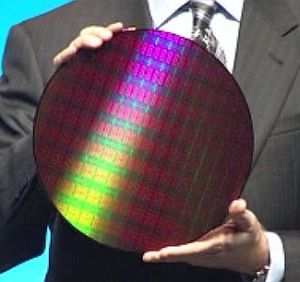Intel is creating a new business unit focusing on mobile computing as part of a larger push into a booming segment of the tech market that currently is dominated by chips based on architectures from ARM Holdings.
Intel sent around an internal memo outlining how the company is combining four divisions to create a new Mobile and Communications group that will help it better compete in the fast-growing tablet and smartphone spaces.
Bell ringing the changes
 “The ultimate goal is we want to speed up and improve the development process,” Intel spokesman Robert Manetta told Reuters.
“The ultimate goal is we want to speed up and improve the development process,” Intel spokesman Robert Manetta told Reuters.
The new group will include the four divisions that had overseen mobile communications: tablets and netbooks, mobile wireless and ultra-mobility. It will be headed by Mike Bell (pictured), a former Palm and Apple executive who came over from Palm in 2010 to head up Intel’s smartphone efforts. While at Apple, he was involved in the development of the iPhone, among other products.
Also leading the group will be Hermann Eul, who came to Intel in the chip maker’s $1.4 billion acquisition of Infineon Technologies’ wireless chip business in a deal that closed in January.
Intel is the world’s largest chip maker, holding more than 80 percent of the global market. The company has done well in its traditional PC and server markets, having several consecutive quarters of record profits and revenues.
Still, the company has not yet been able to gain traction in the mobile-device space, which is expected to grow rapidly over the next few years. Gartner earlier this year forecast tablet sales would grow to 294 million in 2015. At the same time, market research firm In-Stat is predicting sales of 850 million smartphones in 2015.
Ultra marketing
Intel is taking a variety of avenues into the space. The company is readying its “Medfield” Atom chips, which will begin appearing in smartphones and tablets next year. At the same time, Intel is pushing its ultrabook concept of very thin and light notebooks that offer tablet-like features, such as instant-on and always-connected capabilities and long battery life.
Executives expect a flood of ultrabook designs based on its upcoming 22-nanometer “Ivy Bridge” chips, which will feature the company’s 3D Tri-Gate transistor architecture that promises greater performance and energy efficiency than the current 2nd Generation Core Sandy Bridge chips.
Energy efficiency is the key to chips going into these mobile devices, which run on batteries. ARM and its manufacturing partners – including Nvidia, Qualcomm, Samsung Electronics and Texas Instruments – have been building highly energy-efficient chips for years. Intel is coming from the x86 PC and server spaces, where the chips consume much more energy.
Intel in September also unveiled a partnership with Google, in which the two companies will work to optimise the popular Android mobile operating system for Intel’s Atom platform. Intel executives hope the move will help speed its move into the mobile computing space and give the Atom chips a needed boost. During the Intel Developer Forum in September, Intel and Google executives showed off a prototype smartphone powered by a Medfield chip and running the Android Honeycomb OS.





